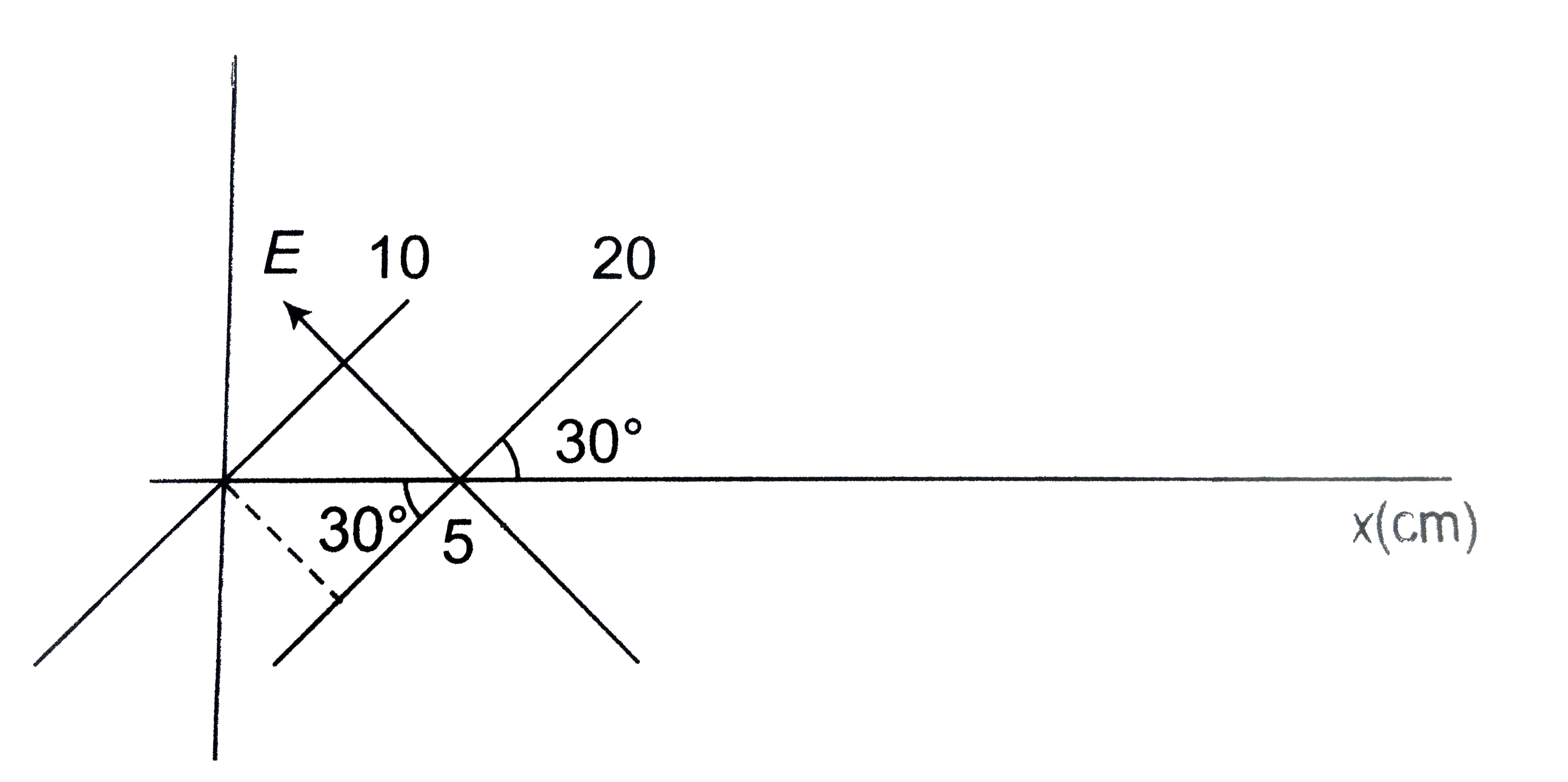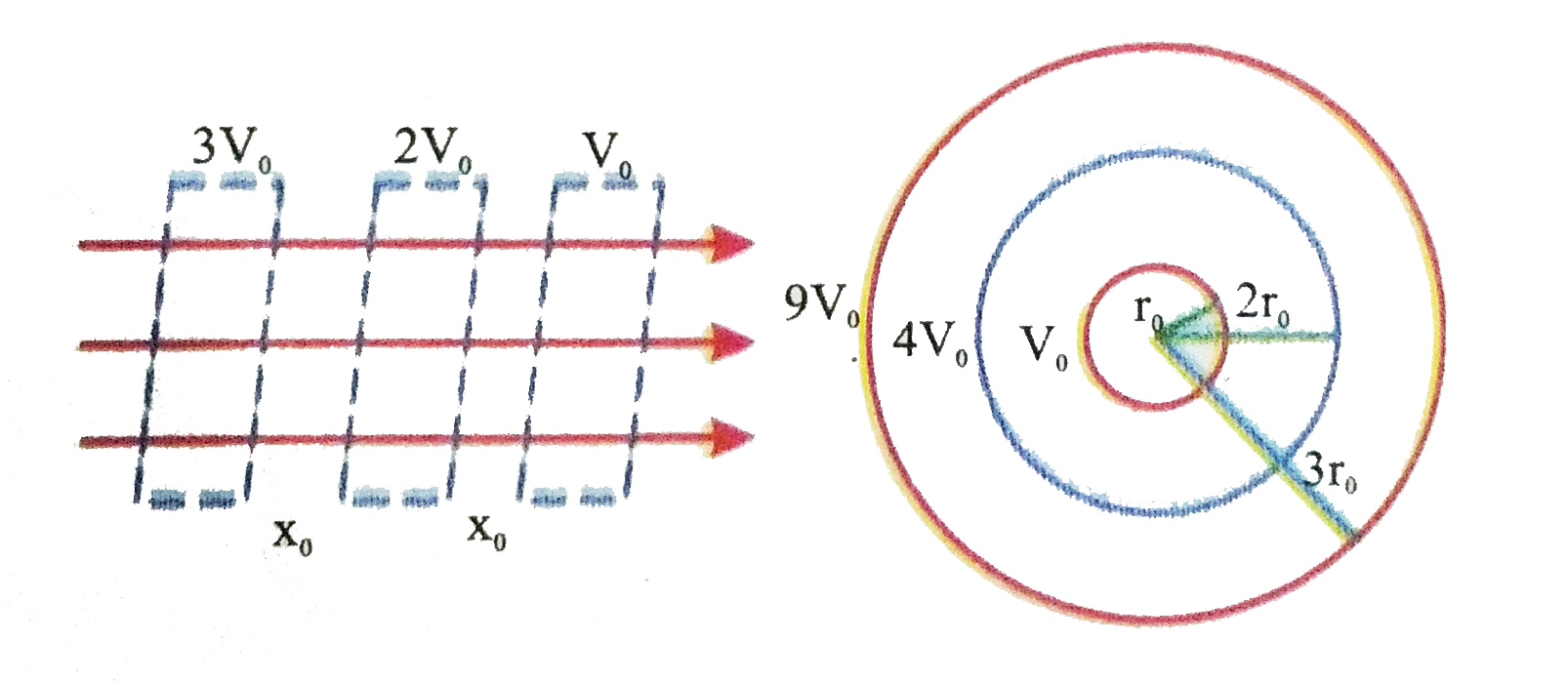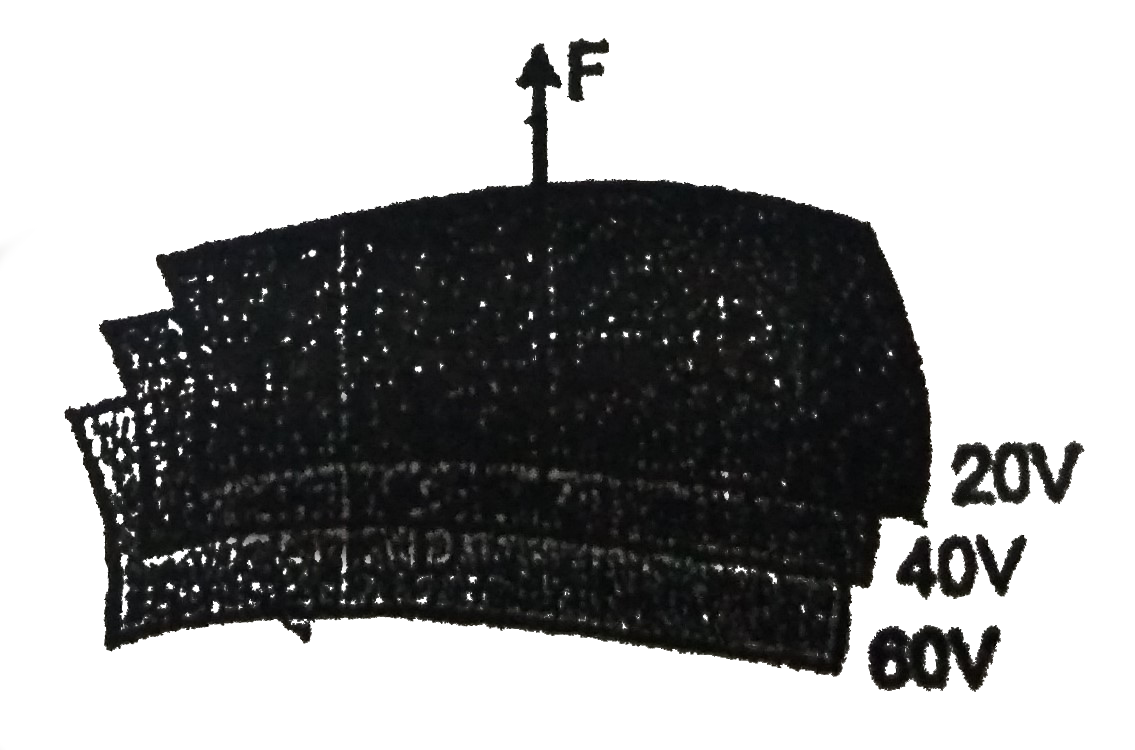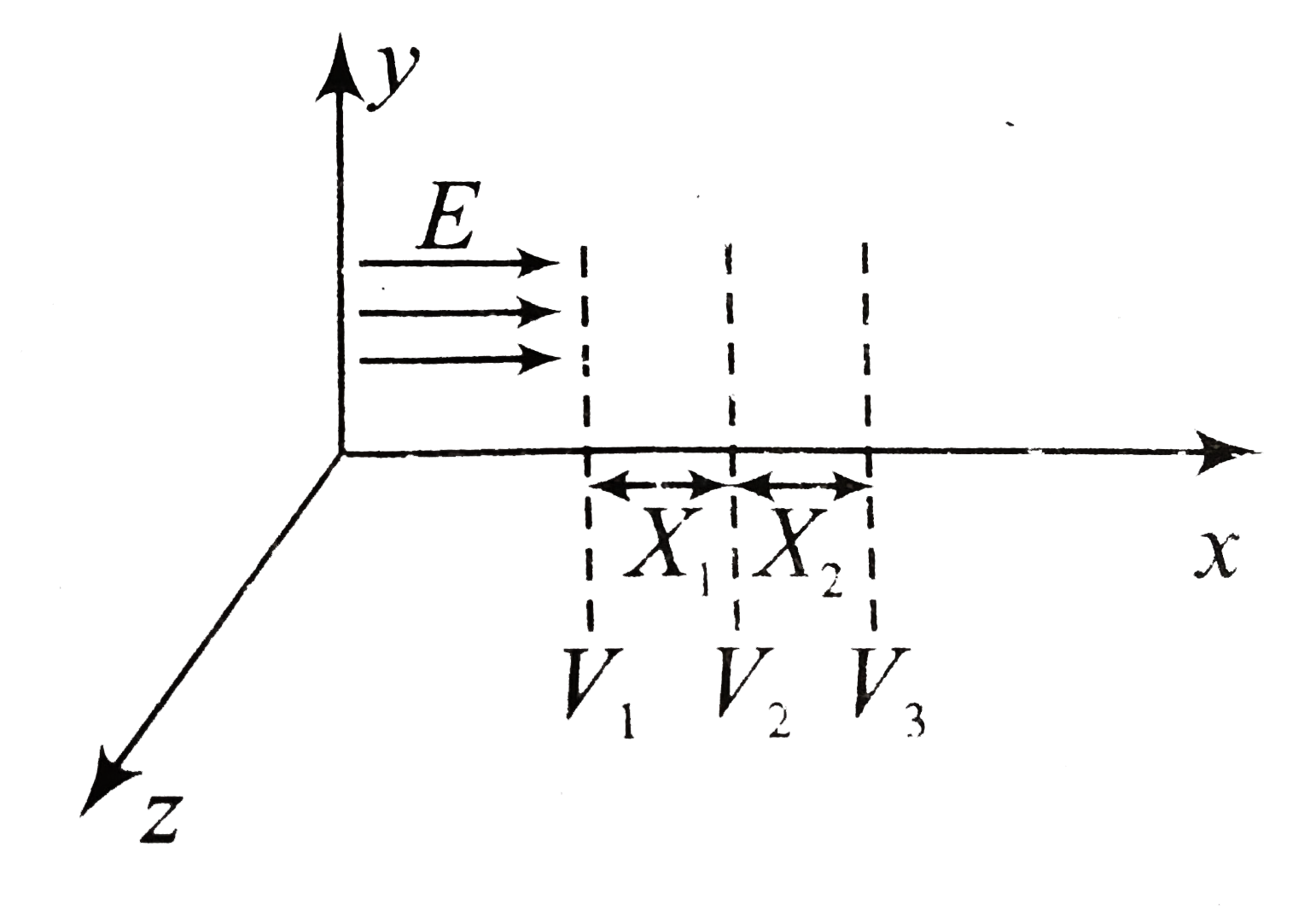Some equipotential surfaces are shown in the figure . Determine electric field at points A,B,C in (a) and in (b).

In the direction of field , potential decreases. In the above cases , electric field is perpendicular to equipotential surfaces.
(a) EA=40−3020=12V/cm , along +x-axis
EB=30−2010=1V/cm , along +x-axis
EC=20−105=2V/cm , along +x-axis
(b) 
Take perpendicular distance between equipotential lines , here electric field is uniform.
E=20−105sin30∘=4V/cm

Topper's Solved these Questions
Similar Questions
Some equipotential surface are shown in the figure. Find the value of electric field :-

View SolutionSome equipotential plane parallel surfaces are shown in the figure. The planes are inclined to x-axis by 45° and distance from one plane to another plane along x-axis is 20cm. The electric field is:

View Solution
Knowledge Check
Some equipotential surfaces are shown in figure .The electric filed strength is
 A100V/m along x-axisB100v/m along y-axisC400V/m at an angle 120∘ with x-axisD400√3V/m an angle 120∘ with x-axis
A100V/m along x-axisB100v/m along y-axisC400V/m at an angle 120∘ with x-axisD400√3V/m an angle 120∘ with x-axisSome equipotential surfaces are shown in figure . The magnitude and direction of electric field is
 A2V/cm at angle 120∘ with +ve x-axis in anticlockwise directionB2V/cm at angle 120∘ with +ve x-axis in clockwise directionC1V/cm at angle 150∘ with +ve x-axis in anticlockwise directionD1V/cm at an angle 120∘ with +ve x-axis in clockwise direction
A2V/cm at angle 120∘ with +ve x-axis in anticlockwise directionB2V/cm at angle 120∘ with +ve x-axis in clockwise directionC1V/cm at angle 150∘ with +ve x-axis in anticlockwise directionD1V/cm at an angle 120∘ with +ve x-axis in clockwise directionEquipotential sufaces are shown in figure a and b the field in
 Aa is uniform onlyBb is uniform onlyCa and b is uniformDboth are nonuniform
Aa is uniform onlyBb is uniform onlyCa and b is uniformDboth are nonuniform
Draw equipotential surfaces for an electric dipole.
View SolutionA family of equipotential surface are shown. The direction of the electric field at point A is along-

View SolutionA few spherical equipotential surfaces are shown in the figure. The electric field at any point, at a distance x from the centre, is

View SolutionSome equipotential lines are as shown is fig. E1,E2 and E3 are the electric fields at points 1, 2, and 3 then -

View SolutionIn an electric field shown in figure, three equipotential figure, three equipotential surfaces are shown. If function are shown. If function of electric field is E=2x2Vm−1, and given that V1−V2=V2−V3, then we have

View Solution

